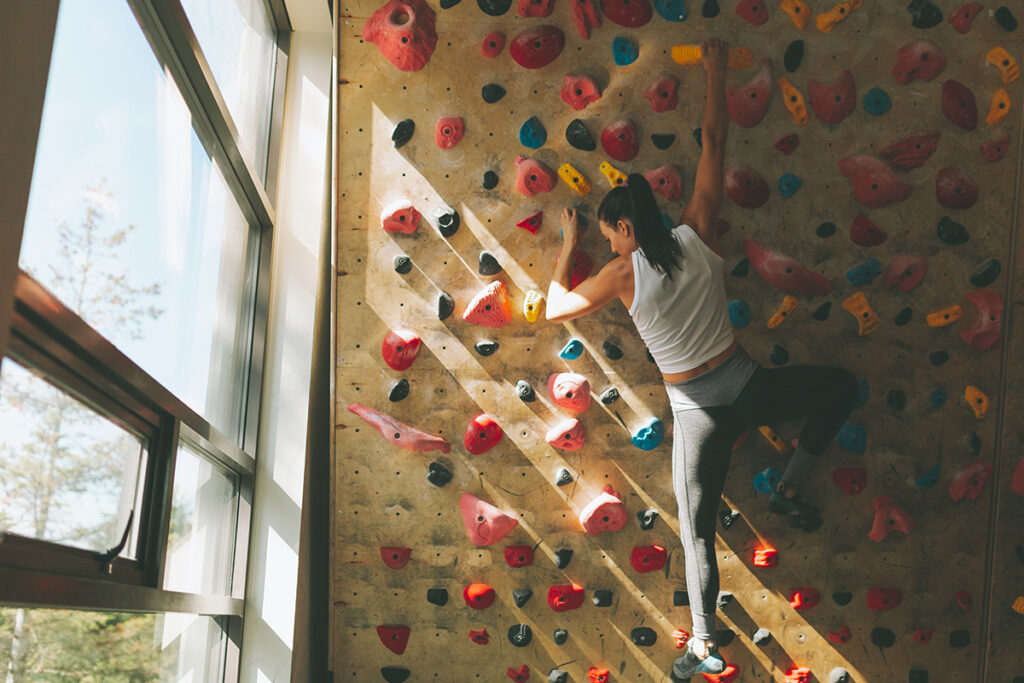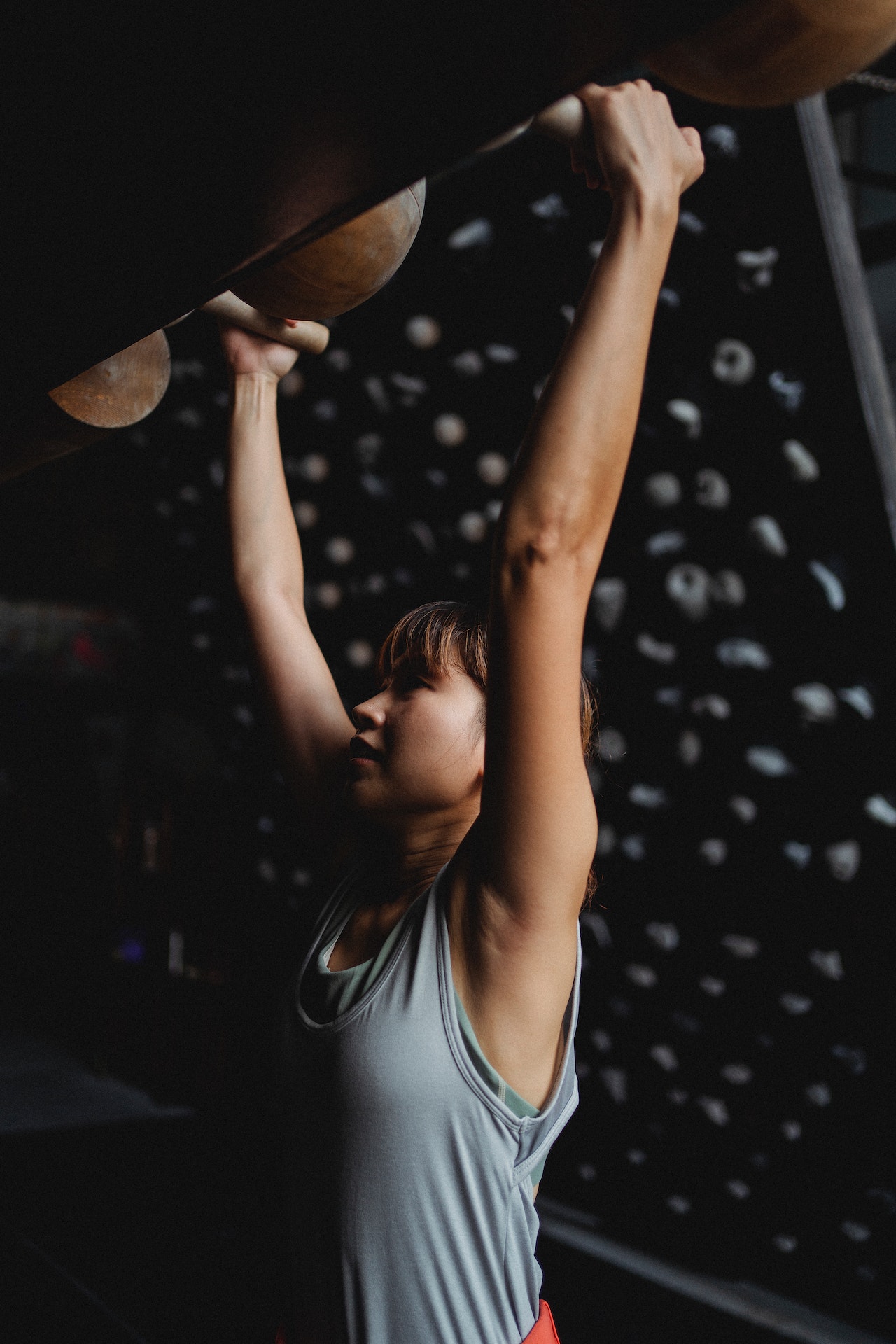In some climbing gyms, “system walls” are all the rage. Maybe your gym has one or two, perhaps even three. Or your gym doesn’t have any, and you’re wondering what a system wall is. If that’s the case, get ready for this article to blow your mind because it may be the greatest invention for simple and practical training to progress in your climbing.

What is a system wall?
Generally speaking, a system wall is a small climbing wall with regularly spaced holds or regularly spaced matching and symmetrical pairs of climbing hold. Usually, you can adjust the board’s angle to make it harder or easier. Although small, these boards are beneficial for training power, power endurance, and endurance. Completing a small number of complex moves works power, repeating hard boulders trains power endurance, and making up long circuits trains endurance.
While ‘system walls,’ or ‘system boards,’ as most climbers will refer, are all generally the same, a handful of different variations sporting unique and interactive features on the market.
However, before diving into the latest and most popular system walls available and found in commercial climbing gyms, it’d be essential to mention the OG systems wall, aka ‘The Spray Wall.’
While fancy, technology-infused boards exist now, a spray wall was the original small climbing wall utilized for training. Climbers or setters would throw a ton of holds onto almost every inch of the board, allowing climbers to create endless possibilities of boulders and circuits. While you’ll still find some old-school gyms with the old-fashioned spray wall, the new, trendy brothers and sisters of the spray wall have taken over the climbing scene.
Many system walls are home-built and contain symmetrical hold layouts. They do not have any fancy apps and brand names to go along with them. They are excellent for practicing movement on both sides of your body. However, several “system walls” have recently emerged in the climbing world. Let’s check them out:

Different Types of Systems Walls (or SICTB – Standardized Interactive Climbing Training Board)
*Note all four System Walls have two standard features. An interactive app that lets you select a climb created by someone else, resulting in led lights illuminating corresponding holds on the wall. And, two, they are all adjustable.
Moon Board
The Moon Board will catch your eye with its bright yellow and white coloring. You can’t miss a Moon Board with the word ‘moon’ inscribed across the center. All jokes aside, it is a great training tool known for being stiff for the grade, so check out one of the other system walls before hopping into the Moon Board as a beginner. It’s also worth noting that the Moon Board is the least adjustable, with only two possible angles, 25 and 40 degrees. Most of the holds on the Moon Board could be more symmetrical (except the wooden holds).
Tension Board
Its wood hold set and symmetry are unique, and it is excellent for training pure power and strength and for making sure your non-dominant side becomes just as strong as your dominant side. So, create a climb on the right side of the board and then replicate and repeat on the left! The Tension board is also a bit stiff, requiring the climber to be comfortable on V4-V5 on the lower end.
Kilter Board
Although a beloved favorite, the Kilter Board is quite expensive. The unique features of the Kilter Board are its angle variability and accessibility. Great for beginners at 0 degrees and elite athletes dropping down to 70 degrees, the Kilter Board can challenge anyone. Additionally, the Kilter Board has a larger climbing area than the Moon Board, its closest competitor. The Kilter Board could be more symmetrical and utilize many of the same hold types.
Grasshopper Board
This board is the final board in our systems wall lineup and is the official adjustable training board partner of Team USA Climbing. The Grasshopper Board has three sets of custom holds that range from big, beginner holds to small, difficult holds, making it perfect for climbers at every level. Grasshopper Climbing is a company to keep an eye on in the coming years as the newcomers are pushing the edge of innovation in climbing training tools. It is fully symmetrical and has excellent hold variation!
So, that’s the speed rundown of a systems wall and the most common ones in climbing gyms. There are endless possibilities of climbs and features that need to be discussed for each board. But now, next time you come across one, you’ll have the knowledge to experiment, train, and try new climbs!
Let us know in the comments below which system walls you’ve climbed on and if you have a favorite for training!

